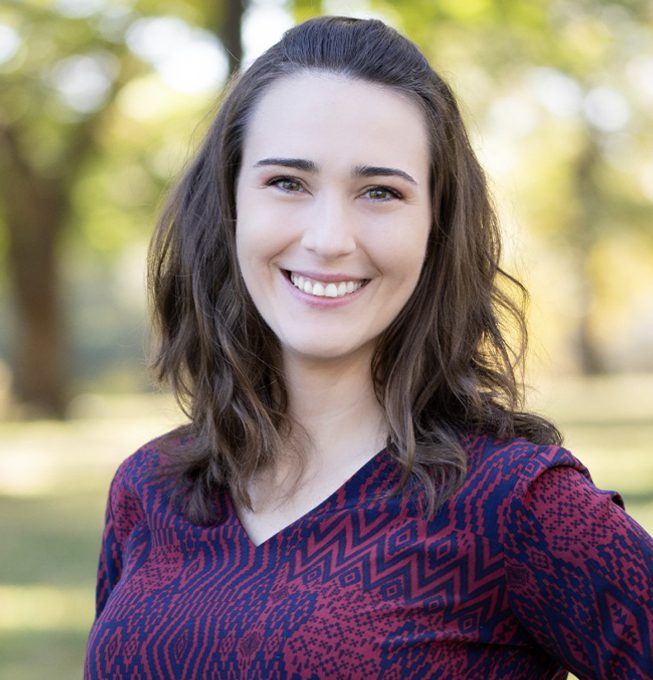August 16, 2021
SECURE Act 2.0 and Student Loans

Once in a while, the release of a sequel to a beloved movie franchise or the reboot of a classic TV series will garner a surprisingly huge amount of attention and excitement. The much-anticipated sequel to the 2019 SECURE Act, fittingly dubbed the SECURE Act 2.0, debuted in Congress in May (only a year and a half after the original became law) and is now due before the full House for a floor vote at some point this year.
Of the bill’s 45 sections, one specifically has the potential to benefit millions of Americans of all ages and occupations. Section 109 of the proposed legislation amends the tax code to treat employee payments of student loans as elective deferrals for purposes of retirement plan matching contributions. More plainly, employees repay their student loans and employers make a contribution to the employees’ retirement plan.
The SECURE Act 2.0 could have the makings of a financial blockbuster hit, as it would allow borrowers to simultaneously repay their (or their dependent’s) student loans and save for retirement. According to Fidelity’s latest study of American student debt, most loan-holding Americans report that student debt is cutting into their ability to sufficiently save for retirement. Even more shocking, roughly one-half of Americans don’t save for retirement at all.
The House has yet to schedule a vote on the legislation, but with bipartisan support, the retirement industry has high hopes that it will pass this year. While the exact language of Section 109 could be revised in the upcoming months, both public and private student loan holders must understand the dynamics of the changes at hand and prepare accordingly. The SECURE Act 2.0 could very well mean a happily-ever-after for individuals who to this point have had to choose between their student loan obligations and saving for retirement.
The case for Section 109: An origin story
Sadly, the collective amount of U.S. student loan debt has hit a record high of $1.71 trillion. The latest student loan debt statistics for 2021 show that there are 45.7 million Americans who hold public and private loans. For some context, U.S. student loan debt is now the second-highest category of consumer debt—and the most common reason cited for why Americans aren’t saving more for their retirement.
What’s more, the amount of student loan debt held by baby boomers is growing, increasing by 33% from 2019 to 2020. These figures include federal and private loans taken out in their own names for their children’s college educations, commonly Parent PLUS loans. In pre-pandemic 2020, baby boomers had the highest average monthly student loan payment of any generation at $722, based on an average balance of $75,000.
Americans hoping to retire within the next 10 years could face a somber shortfall in savings and an over-reliance on Social Security income. On the flip side of the spectrum, young Americans without savings or who are saving inadequately will miss out on the advantage of long-term growth and compounding interest. While generational rivalries fueled by viral Tik-Tok videos and popular memes are still going strong, baby boomers and millennials alike (and don’t forget GenX and GenZ) can find solidarity in a common challenge: student loan debt affecting their ability to save for retirement.
SECURE Act 2.0 plotlines
The 2021 SECURE Act reboot would impact employees repaying a qualified education loan and who work for employers that offer a match in their defined contribution plan. 401(k) and 403(b) are two popular defined contribution plans used by organizations to encourage their employees to save for retirement. With the caveat that the language in the first draft of any significant legislation rarely remains untouched, digging a bit deeper into the bill’s actual text can still provide clarity and understanding for student-loan-holding employees and employers alike.
The term “qualified student loan payment” means a payment made by an employee in repayment of a student loan but only up to qualified plan contribution limits for the year (for 2021, $19,500 for employees under 50; the catch-up limit for those over 50 is an additional $6,500) reduced by the elective deferrals an employee makes for that year.
The proposed legislation also requires the employee to certify to the employer making the matching contribution that they’ve made their student loan payments. No further instruction is given regarding the exact mechanism or process employers or employees must follow to prove student loan payments.
In addition, employer contributions made to an employee’s defined contribution plan on account of a qualified student loan payment will be treated as a matching contribution only if they are made at the same rate and on behalf of employees eligible for participation in the plan. Matching contributions as a result of qualified student loan payments must vest in the same manner as matching contributions to elective employee deferrals.
The SECURE ACT 2.0 also provides for fair treatment of matching contributions for purposes of complex nondiscrimination rules. Employee student loan payments do not have to be treated as a contribution, but they can be to pass nondiscrimination tests. Plans may apply the requirements separately concerning all employees who receive matching contributions for the plan year.
Finally, the proposed legislation also permits a plan to make matching contributions for qualified student loan payments at a different frequency than matching contributions are otherwise made under the plan, as long as the frequency is not less than annually. Employers must establish reasonable procedures for employees to claim matching contributions for qualified student loan payments, including an annual deadline (not earlier than three months after the close of each plan year) by which a claim must be made. As written, these stipulations would apply to contributions made for plan years beginning after Dec. 31, 2021.
Lights, camera, action items for 2021
While the SECURE Act 2.0 has yet to become law, borrowers can still take a few steps to prepare for if or when it does.
1. Refresh your student loan repayment plan. The suspension of federal student loan payments and interest accrual will officially sunset on Sept. 30, 2021. With monthly payments on pause, many borrowers redirected what they would’ve paid toward their loans into a savings account or retirement plan. Over the next few months, revisit your budget and get a better understanding of how your cash flow and savings strategy might change when student loan payments start up again.
2. Understand your current employer-sponsored retirement plan and how its matching contributions work. An employer match can be a valuable benefit and is literally “free money.” It can make a big difference in how much you’ll have saved up when you retire. Every 401(k) plan is different, so whether you’ve been keeping up on your company’s plan offerings or you’re a bit fuzzy on the details, doublecheck the ins and outs of exactly how yours works.
Typically, there are two common types of matches: partial matching or dollar-for-dollar matching. With a plan offering partial matching, your employer will match a portion of the money you contribute (or a portion of your student loan payment if the SECURE Act 2.0 is passed as it currently stands) up to a certain amount. A common partial match offered by employers is 50% of the contribution up to 6% of your pay. With a dollar-for-dollar match, an employer contributes the same amount of money as you (or the full amount of your student loan payment if the SECURE Act 2.0 is passed as it currently stands) up to a certain amount, most commonly up to 4% of your pay. The better you understand your employer-sponsored plan, the better you can plan to take advantage of it.
3. Do what you can to save for retirement and strive for progress. Regardless of how the SECURE Act 2.0 shakes out, it’s important for student loan holders to start saving what they can for retirement. Even a relatively small contribution can add up in a big way. Conventional wisdom actually applies when it comes to saving, and the longer that any sum of money is in the market, the more likely it is to grow substantially.
Make a point of discussing all your financial plans, including your retirement savings and your intention to pay down student loans, with a financial professional.
That’s a wrap
Make sure you understand the implications for your personal financial situation should the SECURE Act 2.0 become law and what steps you can take to maximize its advantages. Take the opportunity to start a conversation about your financial circumstances and the role student loan repayment and matching employer contributions play in it.
This commentary originally appeared July 27 on thestreet.com.
The opinions expressed by featured authors are their own and may not accurately reflect those of Buckingham Strategic Wealth®. This article is for general information only and is not intended to serve as specific financial, accounting, legal, or tax advice. Individuals should speak with qualified professionals based upon their individual circumstances. The analysis contained in this article may be based upon third-party information and may become outdated or otherwise superseded without notice. Third-party information is deemed to be reliable, but its accuracy and completeness cannot be guaranteed.
By clicking on any of the links above, you acknowledge that they are solely for your convenience, and do not necessarily imply any affiliations, sponsorships, endorsements or representations whatsoever by us regarding third-party websites. We are not responsible for the content, availability or privacy policies of these sites, and shall not be responsible or liable for any information, opinions, advice, products or services available on or through them. IRN-21-2398
© 2021 Buckingham Strategic Wealth®
Category
Education FundingContent Topics
About the Author

Becca Craig
Wealth Advisor
